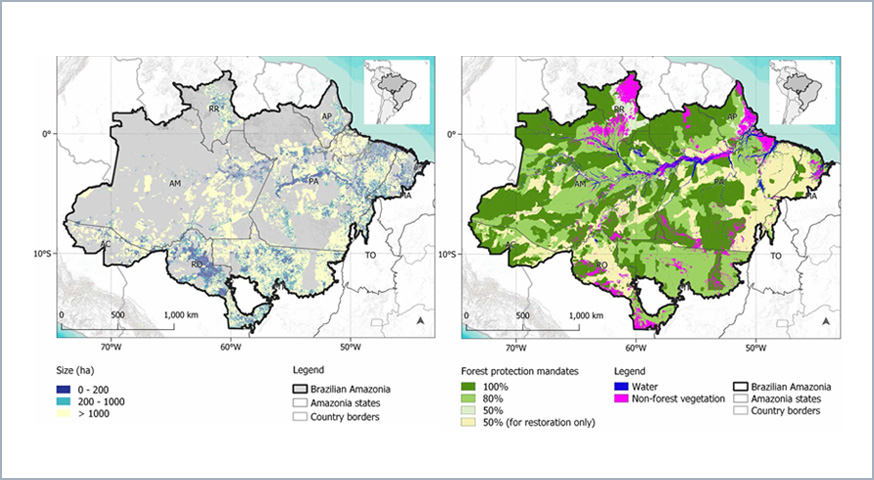Impact of land tenure on deforestation control and forest restoration in Brazilian Amazonia
by Gilberto Camara4,1, Rolf Simoes1, Heloisa M Ruivo1, Pedro R Andrade1, Aline C Soterroni3, Fernando M Ramos1, Rafael G Ramos1, Marluce Scarabello1, Claudio Almeida1, Ieda Sanches1, Luis Maurano1, Alexandre Coutinho2, Julio Esquerdo2, João Antunes2, Adriano Venturieri2 and Marcos Adami1
1- National Institute for Space Research (INPE), Av. dos Astronautas, 1.758, São José dos Campos 12227-010, Brazil
2- Brazilian Agricultural Research Corporation (EMBRAPA), Av. André Tosello, 209, Campinas 13083-886, Brazil
3- Department of Biology, University of Oxford, 11a Mansfield Rd, Oxford OX1 3SZ, United Kingdom ∗ Author to whomanycorrespondence should be addressed.
DOI: https://doi.org/10.1088/1748-9326/acd20a
Publisher: Environmental Research Letters | Published: 12 May2023
Abstract
This study examines how land tenure constrains Brazil’s ability to meet its deforestation control and forest restoration goals in its Amazonia biome. Our findings are based on an updated assessment of land tenure and land use in the region. Between 2019 and 2021, 44% of deforestation in Amazonia occurred in private lands, while forest removal in settlements ranged from 31% to 27% of the total. Deforestation in undesignated public lands increased from 11% in 2008 to 18% in 2021. Deforestation is highly concentrated, with 1% of properties accounting for 82.5% of forest cuts in 2021. In Amazonia, there is considerable non-compliance with the legal reserve provisions set by Brazil’s Forest Code. Legal reserve deficits in private lands sum up to 18.17 Mha (million hectares), compared with 12.49 Mha of legal reserve surpluses. Even if all forest surpluses are offered in the forest credits market set in the Forest Code, farmers still need to restore 5.67 Mha to comply with the law. Large-scale cattle ranchers have a legal reserve deficit of 10.35 Mha (34% of their area). Most crop farming occurs in medium and large properties (4.63 Mha) with a large proportion of legal reserve deficits (45%). Given the political power and financial resources of large ranchers and crop producers, Brazil faces major challenges in inducing these farmers to meet their legal obligations. Therefore, Brazil needs to combine robust command-and-control strategies with market-based policies to achieve its deforestation and forest restoration goals. The government should tailor forest protection and restoration policies to the needs of different landowners, considering their land use practices, technical capacity, and financial resources.
Keywords: forest restoration, Brazilian Amazonia, Brazil’s Forest Code, Brazil’s NDC, land use policy in Brazil
© Original content from this work may be used under the terms of the Creative Commons Attribution 4.0 license. Any further distribution of this work must maintain attribution to the author(s) and the title of the work, journal citation and DOI.
Share and Cite
Câmara, Gilberto & Simoes, Rolf & Ruivo, Heloisa & Andrade, Pedro & Soterroni, Aline & Ramos, Fernando & Guimarães Ramos, Rafael & Scarabello, Marluce & Almeida, Cláudio & Sanches, Ieda & Maurano, Luis & Coutinho, Alexandre & Esquerdo, Julio & Antunes, João & Venturieri, Adriano & Adami, Marcos. (2023). Impact of land tenure on deforestation control and forest restoration in Brazilian Amazonia. Environmental Research Letters. 18. 10.1088/1748-9326/acd20a.



